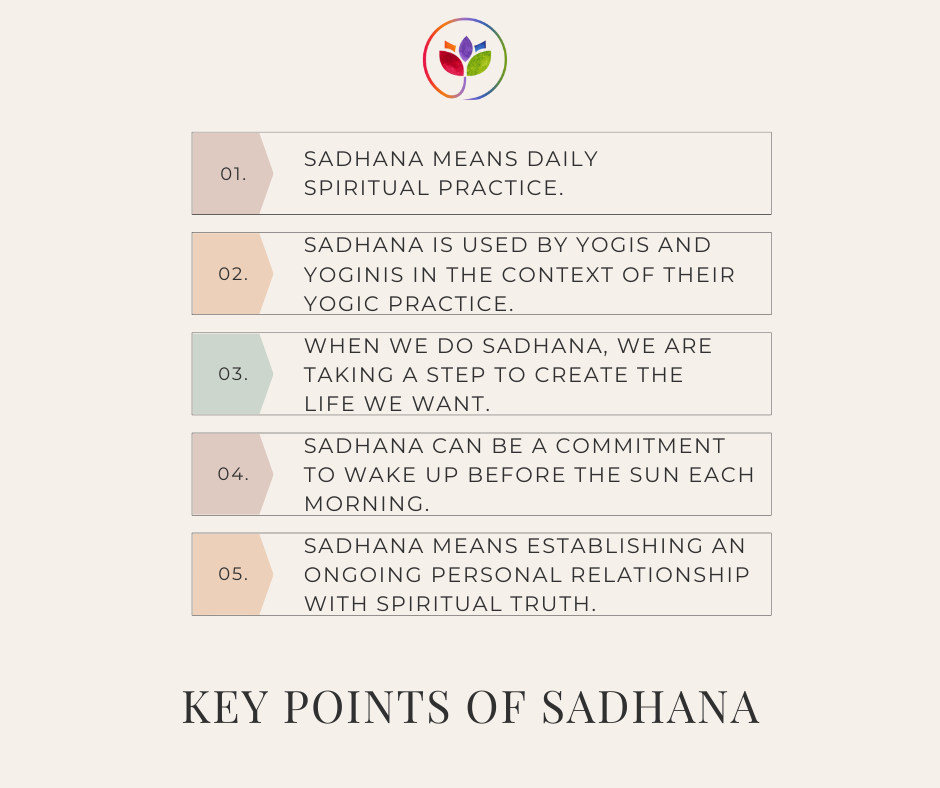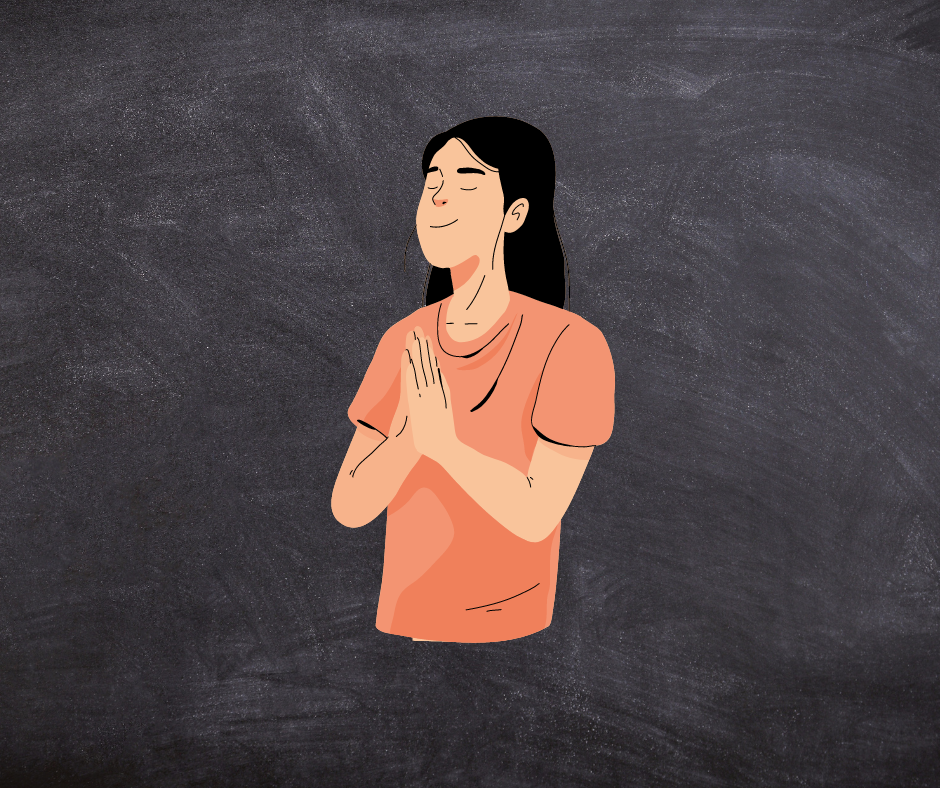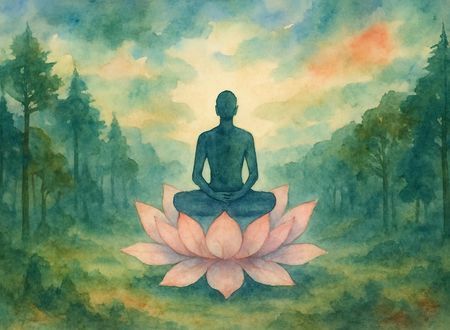What is Sadhana? The Truth About Sadhana
An action that promotes harmony is a regular sadhana. When you commit to spending time with your higher self every day, your life becomes unique, your efforts bear the imprint of your soul, and your radiance communicates the meaningful intimacy of the Infinite in every moment. When you practice Sadhana, you get an intense and gratifying sensation of victory.
Key points of Sadhana

- Sadhana means daily spiritual practice.
- Sadhana is used by yogis and yoginis in the context of their yogic practice.
- When we do sadhana, we are taking a step to create the life we want.
- Sadhana can be a commitment to wake up before the sun each morning.
- Sadhana can be practicing yoga asanas each morning and evening.
- Sadhana can also be a commitment to sit down every morning at a certain time to read our bibles or other books that lift us up.
- Sadhana means establishing an ongoing personal relationship with spiritual truth.
Sadhana is a daily spiritual practice.
Sadhana is a daily spiritual practice. It is known as Sadhana in the yogic language, and it is one of the most important instruments for developing oneself and reaching a higher level of consciousness. Although “Sadhana” is the yogic term used here, Sadhana can be any activity you engage in to enhance your wellbeing, whether that be yoga, meditation, prayer, exercise, or any other health-promoting habit. Consistency and self-control are crucial in Sadhana.
The word ‘sadhana’ comes from the root “sadhan”, which means “resources” or “tools to achieve a goal”. In this context, sadhanas are practices designed to uplift our minds to higher levels of understanding and awareness; they are paths or methods leading to enlightenment.
In the yogic tradition there are various types of sadhanas. They include: meditation (dhyana), japa (repetition of mantra), worship (puja), study (svadhyaya), service (seva), austerity (tapas).
The four essential components of Sadhana
Sadhana
The one who is committed to the path is the sadhaka or practitioner. Given his realization of the futility of financial goals, he has naturally increased the blossoming apathy (vairagya) toward material success. Whatever level of success materialistic endeavors may have, he now understands that they will always be fleeting.
Additionally, they inevitably spread more suffering and anxiety. When trying to create something in the physical world, failure is the first dread you have. The second dread, if you achieve, is losing what you’ve gained.
The Sadhaka-seeker has succeeded in keeping himself away from both these fears by being focused on something else: his inner journey towards self-realization and enlightenment.
The Sidda – The Guru
The Guru-Disciple relationship is considered very sacred by Hindus. The word ‘guru’ means Teacher or Guide (one who removes darkness from ignorance). It is said that when you meet your Guru, you meet God in human form. In order to have a Guru-Disciple relationship, both parties must be willing participants; it cannot be forced upon either party by any means whatsoever.
The Guru will always be present whenever needed by his disciple and vice versa; however it is up to each individual disciple whether he wants to take advantage of this opportunity.
The Sadhya – the Goal
Sadhya, or the goal, is the third crucial component. Knowing your target is essential. Numerous checkpoints in the yoga of self-transformation are designed to lead the seeker. Without a precise aim in mind, attaining anything will mean everything, or achieving everything can mean nothing. Only when you know where you’re going can you plot the best path of action.
In this sense, the ideal “goal” for yoga is not just any state of being but rather one that allows us to live our lives with greater wisdom and compassion. That’s why it’s so important to understand what is meant by moksha (liberation).
Moksha means liberation from suffering, freedom from fear and ignorance, and freedom from attachment to things that ultimately bring us sorrows rather than happiness and fulfillment (i.e., freedom from samskaras). But it also refers to liberation from ignorance itself — that is, liberation from our false ideas about reality based on our limited experience of it through our senses (and especially our minds).
Sadhan – Resources
Or resources, are the final and most crucial factor. Without assistance, it is impossible to perform the practice. I don’t imply that you need a lot of money when I say resources.
I am referring to the energy of others who are willing to help you, and this includes friends, family members and even strangers who may be able to assist you in some way. The practice requires assistance from others because it is not possible for one person alone to accomplish it.
There are two types of sadhan: inner and outer. Inner sadhan refers to the inner qualities needed by an individual who wishes to accomplish this practice. These qualities include faith and devotion, as well as compassion and wisdom. Outer sadhan refers to the external conditions required by an individual before they can begin this practice properly.
The most important resource is your own body. The body is your vehicle for practice, so it should be treated with care and respect. This means taking care not only of external appearance but also internal health and cleanliness of mind.
In addition to the body, you need access to food and water at all times during the day. This is especially true if you are following a strict schedule such as eating only one meal per day or fasting for days on end without eating anything other than liquids (but only after getting permission from a qualified teacher).
These conditions include spiritual guidance from a qualified teacher or guru who has already accomplished this practice themselves at least once in their lifetime; a physical environment where one can withdraw from society and be free from distractions; and financial aid in order for one not be distracted by concerns about food or shelter while performing this practice in solitude for extended periods of time.
Om Swami depicts these as the four pillars of Sadhana
Your practice will evolve over time.
In the beginning of your practice, you might have to force yourself to do Sadhana every day. But as time goes on, it will become easier and easier. You’ll begin to crave those moments of solitude and stillness each day.
As you progress in your sadhana, you’ll find yourself having fewer distractions during these times – such as social media or television – because they no longer interest you as much as your daily Sadhana does.
Spend as much time as you can on your daily practice to advance your Sadhana, as it’s consistency that will help you create the best habits for success. Instead of engaging in
Sadhana for one entire day each week, it is preferable to do it intermittently throughout the day. This could involve taking a daily yoga class or simply taking 15 minutes at sunrise to focus on your breathing and your mindfulness practice.”
It takes time to cultivate the habit of sadhana.
The path to enlightenment is simple, but not easy. Understand that every step you take toward your goal is a seed that will bear fruit in its own good time. Seeds perform a large portion of their vital tasks underground, but they eventually blossom into flowers and grains, fruits and vegetables.
You are a seed too, growing in your own way and at your own pace. Every sadhana session has value.
Expecting results daily obsession might become a barrier. While keeping your destination in mind, concentrate on the steps rather than the result. You will accomplish your goal more swiftly.
Practicing mindfulness will help you value and enjoy each stage of the journey. You will quickly discover that the results of your Sadhana are frequently more significant than you had anticipated, in addition to frequently being different.
Sadhana is not just rituals, it’s also your actions.
Your actions can be a form of sadhana—in fact, it may be one of the best ways to practice sadhana in today’s world. For example, you can take a vow to practice truthfulness in every situation for 40 days. Or you can take a vow to practice gentle speech.
If your practice involves taking out time for spiritual practices, it starts with you and in your home. It must be done consistently, at the same time every day—not for two hours one day, an hour the next, and then forgoing it for three or four days because you are too preoccupied with other affairs—but every day, at the same time.
If you want to make progress on your spiritual path and gain freedom from suffering, it is important to establish a routine that will enable you to devote some time each day to your spiritual practice. The more disciplined and dedicated you are in this regard, the faster your progress will be.
Establishing a daily routine can be difficult when we live in a world that encourages us to go with the flow of events instead of making plans ahead of time. But if we are determined to follow our spiritual path, then we have no choice but to make some rules for ourselves about how much time we will devote each day
You will grow in self-understanding as you develop your sadhana.
As we practice Sadhana, we tend to understand ourselves better, and we realize the true strength of our inner conviction. The word “sadhana” derives from the same root as the word “siddhi,” which means to complete, perfect, realize, manifest, or provide reality.
Sadhana is a technique for finishing or perfecting a task. We need to introduce yoga as a sadhana in which we strive to raise our consciousness because so many people define it as a workout, wellness program, or therapy.
Yoga is traditionally said to as a sadhana that leads to Atma Siddhi, also known as union with Ishvara or Self-realization or God-realization. It involves a comprehensive process. Sadhana Pada is the name of the second part of the Yoga Sutras, and it comes after the first segment, Samadhi Pada. To achieve this, Sadhana Pada introduces Kriya Yoga, Ashtanga Yoga, and a variety of other yoga practices.
Real life experiences from Sadhana
The best thing about Sadhana is that it can change your life in many ways. It will give you a new perspective on life, it will make you a better person, and it will make you realize how beautiful life can be.
Sadhana has changed the lives of so many people. Rajiv Kumar shares his experience of transformation from the practice of Sadhana. A student of CSE, Rajiv started doing a Sadhana inspired by Om Swami videos. His life changed within months of Sadhana, and he relinquished his bad habits and is gaining an optimistic perspective on his life.
Alok Singh shares his experience from Sadhana of Speech. It has helped him to think out of the box. He was suffering from anger issues, and the Sadhana enabled him to combat it. He now realizes that anger is poison and realizes that the little time we have, should be beautifully spent with our loved ones. Because we take everyone for granted. Sadhana has helped him live with mindfulness and awareness in every evolving moment.
Frequently asked questions on Sadhana by practitioners
Read the trending questions and answers on sadhana from the os.me community.
What are the number of days recommended for any Sadhana?
You can do 7, 11, 21, 41. But I think 7 is the bare minimum one can do.
For this, I think yes, that is recommended to do but if it is difficult to do due to time constraints then you can do what is best suited. But the key here is : Your Sincerity. Read the Q&A thread or share your experience with the community.
Should one not start any sadhana or meditation until one has achieved 'Asana siddhi'?
According to Swamiji, you can do any meditation (from A million Thoughts) and some sadhana without Asana siddhi, but he warns that without Asana Siddhi if we do advanced pranayama, it might damage our nervous system.
In Black Lotus app, any beginner can do meditation and simple pranayam without any prior experience and asana siddhi. Read the Q&A thread or share your experience with the community.
I am taking up a mantra sadhana for the first time.
- We do all 40 malas at one go in the morning? or we can split them in morning and evening sessions?
- For a 30 day sadhana, we do 40 malas a day.. Instead, can we extend this duration to 50 days and do 24 malas per day?
I am writing this from my personal experience. If you are going to do Havan every day after your Japa, then try to finish the Sadhna in 30 days itself and don’t stretch it further. Reason being, the more you stretch, the more there will be probability of it getting Khandit. There can be any xyz reasons for the same and I won’t indulge into them.
Another thing is that, more days means extended number of Havan and that will become extremely tiring going forward. If you aren’t doing Havan, then you have to do extra Japa to compensate that. But personally, I felt it strongly when you will do the Havan too yourself, that add lot of new things in your spiritual basket and its always more fruitful than doing extra Japa, especially when pursuing naimitik karma.
I completed my first spiritual Sadhna of 30 days in 15 days and results were mind boggling and I witnessed few unbelievable or unworldly experiences. The fiercer your input will be, the rewards will be sweeter too. Rest all depends on your condition and circumstances. It’s better to commence Sadhna than not at all. Do let me know if you ever need any guidance around any Sadhna. Read the Q&A thread or share your experience with the community.
A question on a Sadhana in book and Guru mantra
In the Ancient Science of Mantra book, it is written to chant Gayatri mantra for 30 rounds at sunset. I have tried it and it takes at least 7-8hours for me. If you do it at sunset, you would finish around 2-3am and then you have to do the Puruscharana proper. Without a good night’s sleep, I find it impossible to function the next day and still have good concentration trying to chant the main mantra. Any thoughts or advice on this or am I chanting too slowly?
2)The Guru mantra is om gam gurave namah. In the sadhana app, I kept hearing “om gum guruve namah” being chanted. For anyone who has noticed or done the sadhana, could you please kindly advise me as I am really confused.
- You don’t have to do this in one evening/night. You can divide it in multiple evenings.
Assume you want to start your Sadhna from 2 August then you can do like this :
5 mala of Gayatri mantra in 27th July’s evening + 5 mala in 28th July’s evening + 5 mala in 29th July’s evening + 5 mala in 30th July’s evening + 5 mala in 31st July’s evening + 5 more in the 1 August’s evening = Total 30 Mala before your main Purushcharna starts.
Or anything like that as per your capacity.
This was told by Swamiji himself in the Swaminar of Black Lotus App.
- Guru Mantra :
In the book : ॐ गं गुरवे नमः
In Sadhana App : ॐ गं गुरवे नमः
Both are same but if you are talking about pronunciation (if I am right) then go with the Sadhana app.
Actually there’s a very subtle difference here, the dot on the beej letter (ग) is pronounced as “gng” by some and by some it is pronounced as “gum” and Swami Ji Clarified about this many times in his videos.
In reality it is neither, It is pronounced as we pronounce Maa (मां), Like a very subtle nasal sound in the end.
In this case you can go with the one mentioned in the Sadhana app but if you want more clarity then watch this video by Swamiji :

Read the Q&A thread or share your experience with the community.
Takeaway
Sadhana is your daily practice dedicated to staying connected with higher truth and becoming that truth in your day-to-day life.
As Roger Gabriel says, “The basic difference between an enlightened saint and the average person is the level of awareness each enjoys. Everything you do becomes a spiritual act if you do it with awareness, and awareness transforms even the most mundane act into Sadhana.”
More Resources on Different Sadhanas
- The best Sadhana app for Hindus
- How to do Kartik Surya Sadhana
- How to do Nav Durga Sadhana in Navratri
- How to do Gayatri Sadhana









Comments & Discussion
5 COMMENTS
Please login to read members' comments and participate in the discussion.